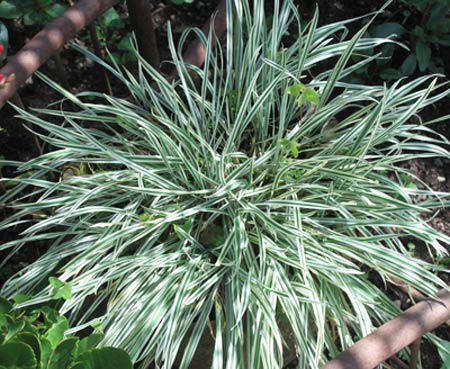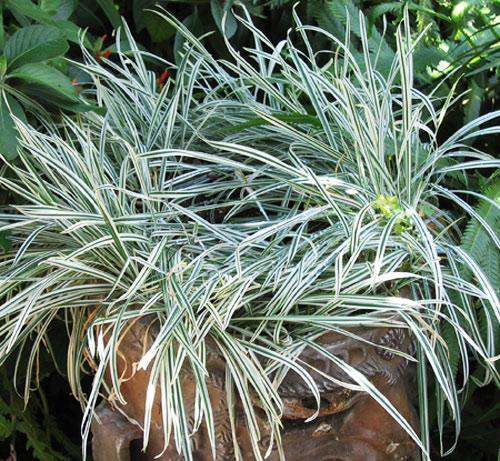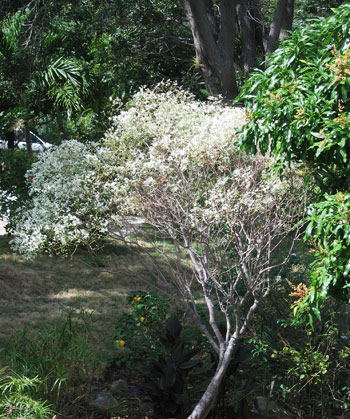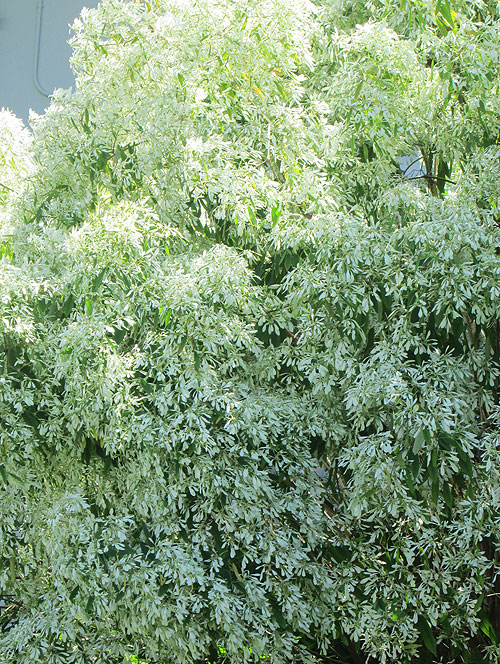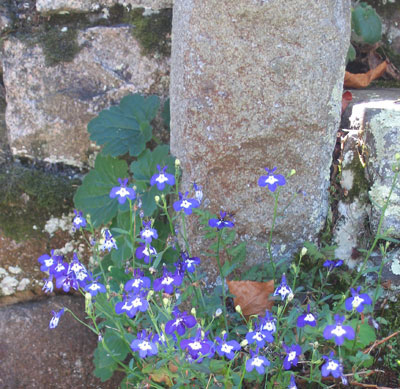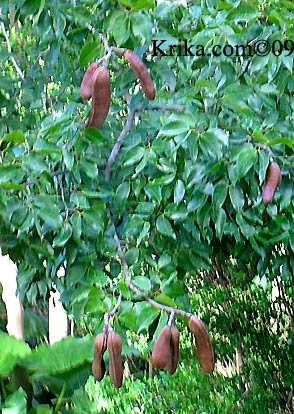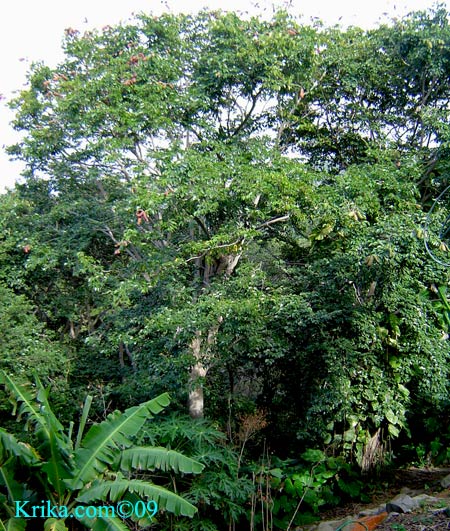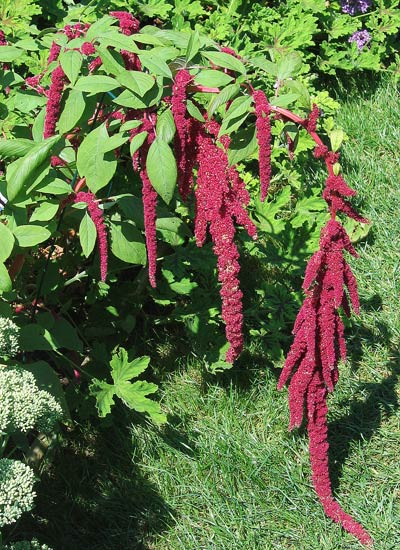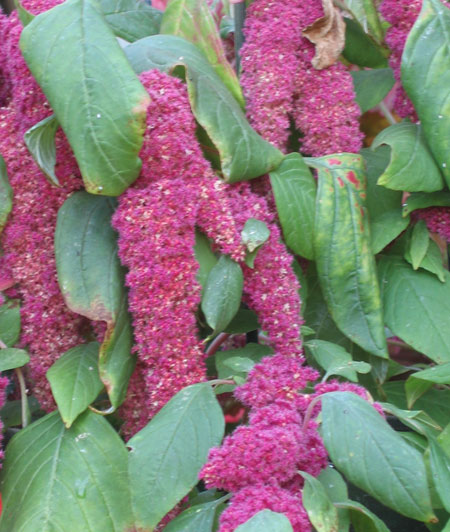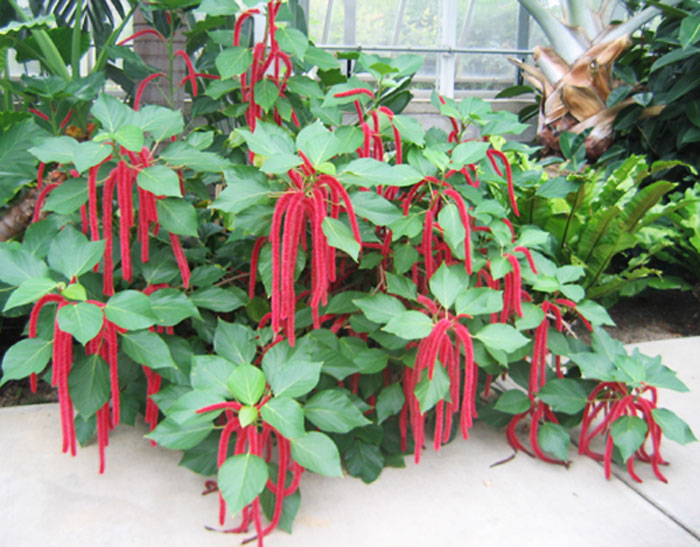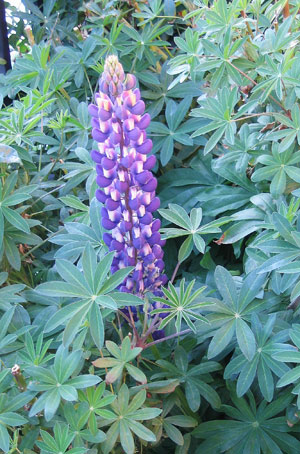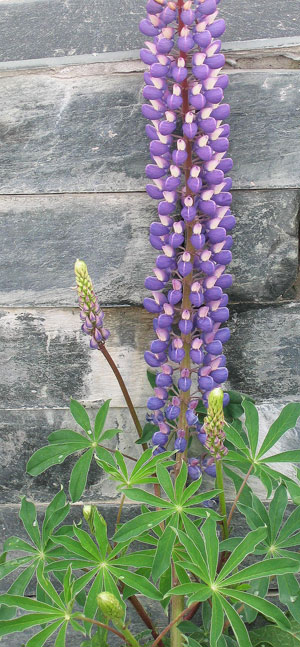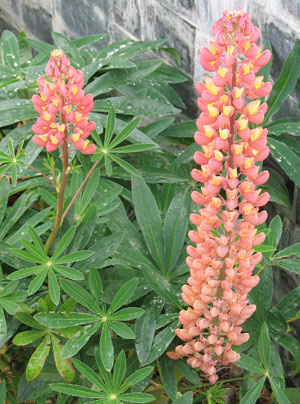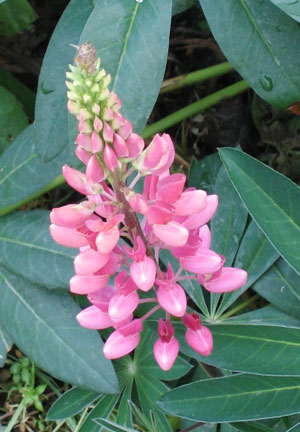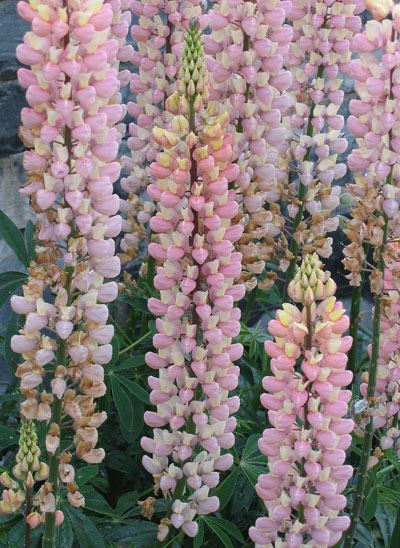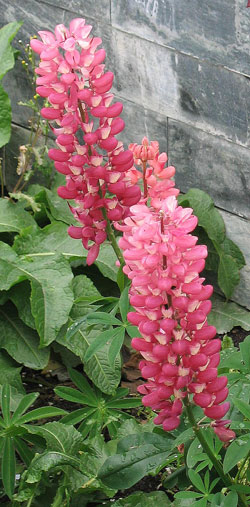| GreenGardeningCookingCuring.com | L
PAGE |
| HOME | |||
| Tour Our Destination Websites | Taxco-Today.com | Oaxaca-Today.com | Montserrat-Today Site |
| See our silver designs at Krika.com | Read our travel stories and other tales at Krika.com |
|
|
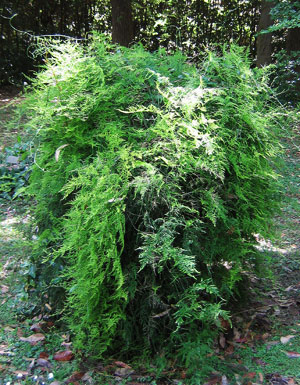 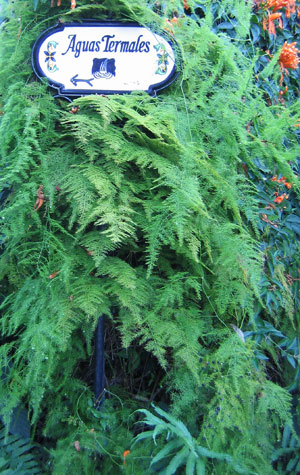 **Lace
Fern, Asparagus Fern, Common Asparagus Fern, Climbing Asparagus,
Ferny Asparagus, Plumosa Fern, Brides Bouquet Fern Asparagus
setaceus syn. Asparagus plumosus, Protasparagus plumosus,
Protasparagus setaceus **Lace
Fern, Asparagus Fern, Common Asparagus Fern, Climbing Asparagus,
Ferny Asparagus, Plumosa Fern, Brides Bouquet Fern Asparagus
setaceus syn. Asparagus plumosus, Protasparagus plumosus,
Protasparagus setaceusThis is an extremely feathery long branched fern-like plant often used as greenery in delicate flower bouquets. It was never one of my favorite ferns, but at our former home in Montserrat it was a volcano survivor which gave it a lot of points in anyone's book! I found it especially hard to get it into a pleasing shape, but it can be done as you see in these photographs. In the end, I have found out that it isn't a fern at all, but a perennial herb with fronds that may extend to more than 20 feet in length. Benefits: This is a plant with a variety of curative benefits. From: Southern Africa Photographed: On the left at the Botanical Garden in Naples, Italy, and on the right at the Hotel Regis in Panajachel, Guatemala. Planting and Care: These are extremely easy to grow plants. Plant them in a bright shady spot where whatever sun it gets comes in the morning. Water it when dry and lightly fertilize. I have seen them growing like these, with the support of a stump or light post or something similar and I think that is a very good way to see them at their very best. It is a plant with a tough grip on life. Text & Photographs ©KO 2012 and GreenGardeningCookingCuring.com 2018 |
||
| **Lantana,
Big-Sage, Wild-Sage, Red-Sage, White-Sage, Tickberry Lantana
camara Not a spectacular flowering bush, but as a butterfly and hummingbird attractant lantana is terrific. Like so many other plants in a hot weather or tropical garden, the lantana is poisonous. The colors of its flowers range from pink lavender and white through to yellow and orange. Benefits: Lantana leaves may have anti-microbial, fungicidal and insecticidal properties. It has also been used in traditional medicine to treat a wide variety of illnesses. From: Lantana comes from the tropical Americas. Photographed: At the Hotel Atitlan on Lake Atitlan in Guatemala. Planting and Growth: Lantanas are tropical and appreciate warmth as well as growing best in full sun. Once settled in lantana tolerates dry conditions and appreciates very occasional fertilizer. Drought can have a negative effect on lantana's overall health. Text and Photographs ©KO 2008/2010 and ©GreenGardeningCookingCuring.com 2018 |
||
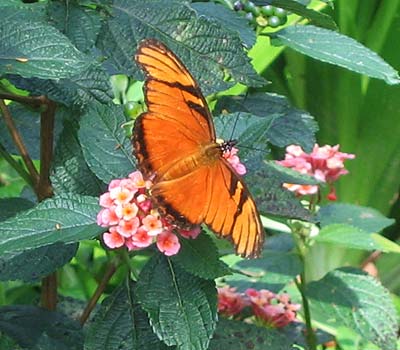 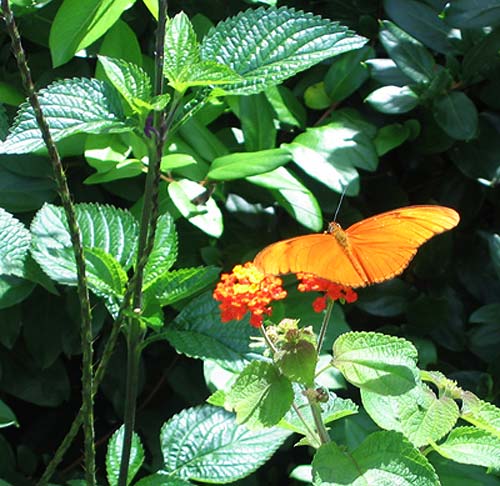 |
||
|
||
| Lavatera
'Pink Blush', Rose Mallow, Royal Mallow, Annual Mallow Lavatera
arborea This is a bushy plant growing to be about six feet tall. It can be a perennial, biannual, or annual depending on the variety you purchase. Benefits: It is said to have medicinal benefits when used externally as a poultice on sprains. From: Southern Europe, Southern United States, Mexico and Australia Planting and Care: One of the odd qualities of this plant is its salt tolerance which makes it ideal for gardens near the sea. Give it full sun and routine watering or rainfall and it will do just fine. Text and Photographs ©GreenGardeningCookingCuring.com 2013/2018 |
||
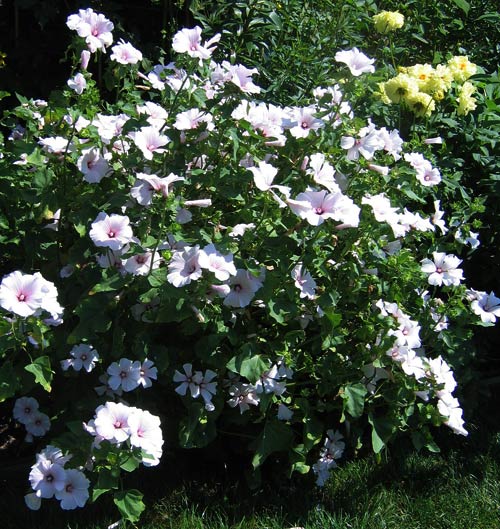 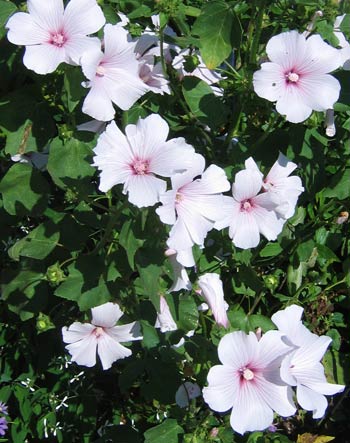 Photographed: In
the Thuya Garden, Mt. Desert Island, Maine,
2013. Photographed: In
the Thuya Garden, Mt. Desert Island, Maine,
2013. |
||
| Lavender,
English Lavender, Common Lavender, Narrow Leaved Lavender, True
Lavender Lavandula
angustifolia Lavender is one of those treasures that bloom all summer on about four foot tall stems. In warmer gentler climates it looks like that in Naples, Italy. In more robust climates like that in Patagonia where it also takes on a more robust appearance. Benefits: The leaves and flowers of lavender have long been used in herbal medicine, as a tea or essential oil. What surprises me is that lavender may also be used to repel moths as they do not find the scent as appealing as we do. From: The mountainous areas of western Mediterranean countries, especially northern Spain. Photographed: Below on the left in the Botanical Garden in Naples, Italy and on the right in Calafate, Patagonia, Argentina. Planting and Care: Plant lavender in well drained relatively poor sweet or alkaline soil in a sunny place in the garden. It is also tolerant of relatively dry conditions which makes it even easier to grow. Text and Photograph ©GreenGardeningCookingCuring 2012/2018 |
||
|
||
**Leaf
Cactus, Rose Cactus, Wax Rose, Seven Star Needle Pereskia
bleo Mystery solved by Ursula G. living in Southern Germany |
||
|
||
| **Leather Leaf Fern Please see the FERNS Page | ||
| Ledenbergia peruviana Please see the W Page -- Wedding Bouquet | ||
| **Leeks Allium
Ampeloprasum variant Being Irish I could easily sing the benefits of leeks if someone were willing to listen. Instead just make a pot of leek and potato soup and you'll know why I would sing. Benefits: Including leeks in your diet will give you a nutritional boost pretty much across the health spectrum. Not only do they aid in preventing illness, they provide additive benefits to the function of your body. From: The wild leek seems to be native to the world at large as it grew in its wild state in Britain and Europe through to Asia. It grew as well in Mexico and in parts of Africa. Planting and Care: In garden planting, dig a trench about 8" deep and mix the soil with good compost and a bit of sand. Add back about 4 to 6" of that mixture back into the trench and plant your leek seedlings taking care to plant only the white part. As the season moves on and the leeks grow, add back the rest of the soil and cover it with some sort of mulch to keep the soil moist. Leeks appreciate moisture, but do not do well in wet soil. Leeks also like soil that is high in nitrogen, so routinely give it compost tea during the growing season. Leeks can be harvested at any time, but usually gardeners wait until the stem diameter is about 1" or more. Text and Photographs ©KO 2008 and ©GreenGardeningCookingCuring.com 2018 |
||
|
||
**Lemongrass Cymbopogon
citratus Click here to see the lovely lemongrass growing in our herb garden in Montserrat. |
||
|
||
| Lemon
Tree Citrus limon (L.) Osbeck Lemons are truly wonderful. After living for many years in Mexico, I became appreciative and well adapted to the limes common there. They are much better than anything I knew as a lime in the States. Still, every now and then I would have loved to have a lemon. Benefits: Kidney stones are a common health complaint and they can be extremely painful. Solve the problem before it becomes one by routinely enjoying a glass of fresh squeezed lemon juice. Lemons contain high quantities of citrates that will likely break down calcium deposits that may eventually become kidney stones. From: Asia Photographed: On the left below in the Botanical Garden in Naples Italy, and on the right in the Botanical Garden in Palermo, Italy. Planting and Care: Plant your small tree in well drained fertile soil in a sunny place in the garden which is protected from wind. It is not difficult to grow a lemon tree from seed, but you may prefer to purchase one which will give you the type of lemon you want without waiting several years for the seed to mature enough to produce fruit. Still there is something to be said for starting a tree from seed. Take a few seeds from your preferred lemon. After soaking them in water overnight, place each seed in a 3 inch pot of fertile potting soil. Cover the seeds with about 1 inch of soil, cover them with plastic and put them in the sun. Check daily that the soil is moist until the lemon plant makes its appearance. Remove the plastic bag and move the pots to a place where they will be protected from the hottest afternoon sun and you'll be off and running. After several years you'll have lemonade! Text and Photographs ©GreenGardeningCookingCuring.com 2012/2018 |
||
|
||
Lentils Lens
culinaris |
||
| **Leopard Lily See the "B" Page -- Blackberry Lily | ||
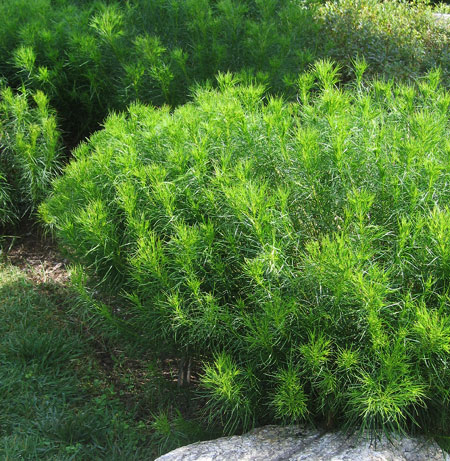 Lettermann's
Ironweed, Iron Butterfly, Narrowleaf Ironweed Vernonia
lettermannii Lettermann's
Ironweed, Iron Butterfly, Narrowleaf Ironweed Vernonia
lettermanniiI remember having a plant similar to this when I lived in Rhode Island. Growing to about 2 feet in height, it provided a perfect bright green background for all of the flowers I planted. When it blooms, it has small very pretty purple flowers. Benefits: It is very attractive to butterflies. From: Oklahoma and Arkansas Photographed: In the Coastal Maine Botanical Gardens, Boothbay, Maine, 2013. Planting and Care: Lettermann's Ironweed is a perennial wildflower which prefers to grow in full sun planted in any soil with good drainage. Handling life in the wild in these two states, this is a very hardy plant. Text and Photograph ©GreenGardeningCookingCuring.com 2018 |
||
LETTUCE |
||
**Lettuce Lactuca
sativa |
||
|
||
Photographed: At
our former home at Lake Atitlan in Guatemala, 2013.  |
||
|
||
Maturing
Romaine Lettuce Photographed: At our home at Lake Atitlan in Guatemala in 2015. 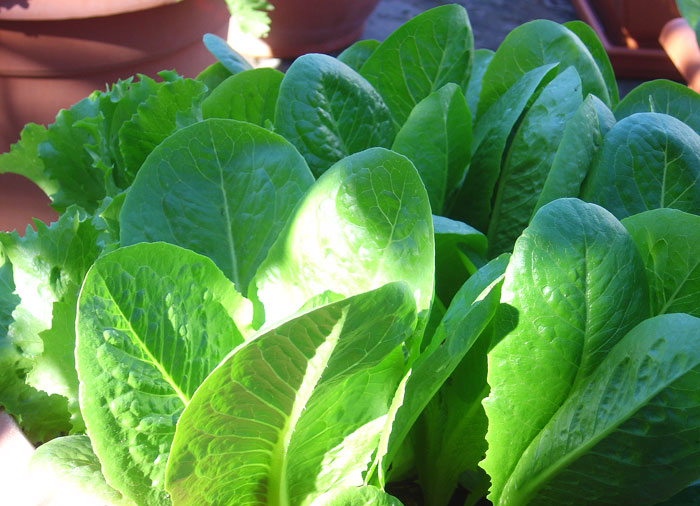 |
||
| Young
Romaine Lettuce Photographed: At our former home at Lake Atitlan in Guatemala in 2015. 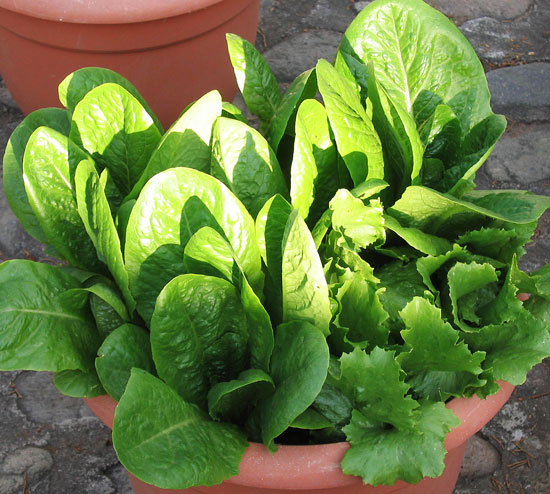 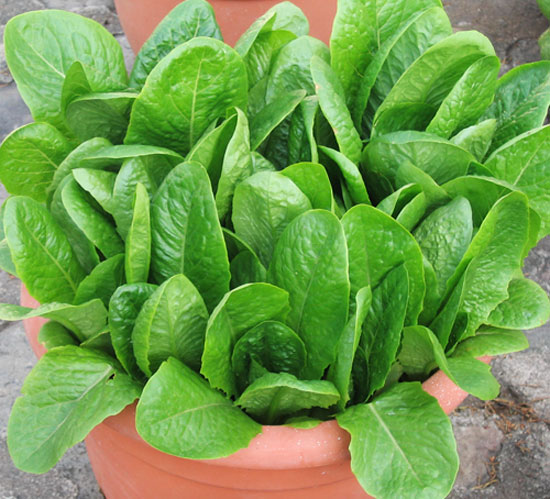 |
||
Young
Iceberg Lettuce Photographed: At our former home at Lake Atitlan in Guatemala in 2015. 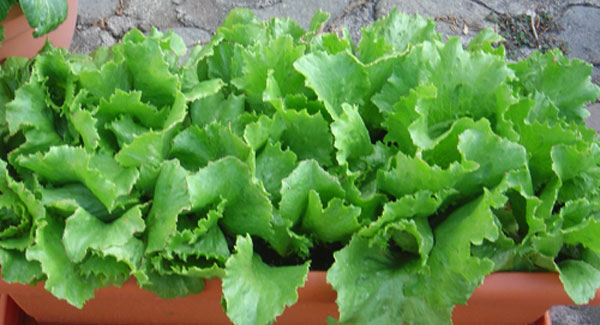 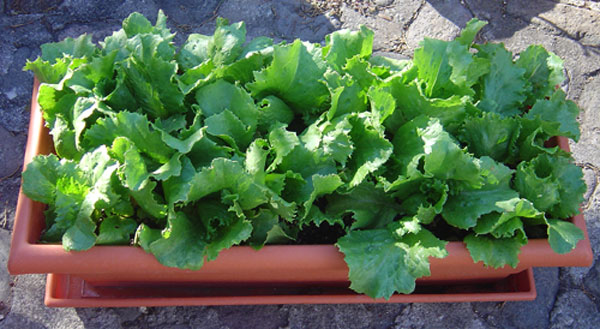 |
||
| Opium
Lettuce y Benefits: From: Photographed: Planting and Care: Text ©GreenGardeningCookingCuring.com 2018 |
||
| Life Plant See the "K" Page -- KALANCHOE -- Donkey's Ears | ||
| Lignum
Vitae Guaiacum sanctum This is a relatively small tree growing to be at maturity only about thirty feet tall. Its real asset in the garden is that when it flowers it is spectacular! Plant it where its one inch blue flowers will maximize the show. It is a native of the Caribbean. Planting and Care: Like the cordia tree, the lignum is a true friend to tropical gardeners. It loves the rain, but it will tolerate a long dry season, and it will grow happily in the sun or in a semi shady area. It does not grow too fast and will normally bloom in the spring. Text ©KO 2008 |
||
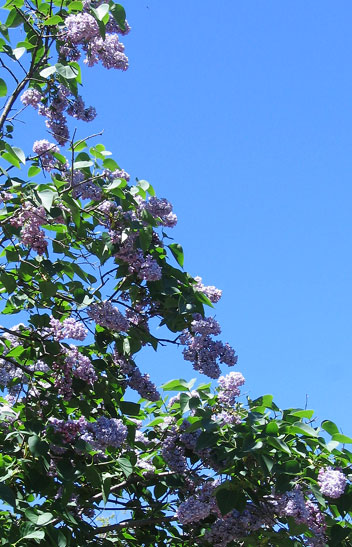 Lilac Syringa
vulgaris Lilac Syringa
vulgarisThis is a spring flowering shrub that should be enshrined in the gardeners hall of fame. It probably already is in New England. I grew up with this plant and every spring dreamed of the coming abundant flowers with their heady scent. My best friend in all my life had lilacs for her wedding flowers and you can imagine the scheduling problems trying to aim for the most showy flowers of the spring season. I hadn't smelled them in many years when I spotted this one lone bush in Sicily. Slamming on the brakes I got out to take this photograph. Benefits: Lilac oil is said to have many medicinal benefits when applied to the skin. As an added benefit, lilacs are non-toxic to humans and to pets. From: The southern area between Greece and what we knew as Russia. Photographed: By the side of the road in Sicily, Italy, in 2012. Planting and Care: Lilacs are said to grow to be about 16 feet tall though I have never seen one this big. If you deadhead the flowers before they become seeds, you may have successive years of a real show stopper. Plant you lilacs in fertile, humus-rich, well-drained, neutral to alkaline soil. Make sure you have selected a site for it that will get no fewer than 6 hours of direct sun each day, more is preferable, and be sure it is in a place where there is good drainage. Planting a new lilac may be more successful if you do it in autumn rather than in spring. Text and Photograph ©GreenGardeningCookingCuring.com 2013/2018 |
||
| **Lily
of the Valley, May Bells, Our Lady's Tears, and Mary's Tears Convallaria
majalis If I get to it I'll put up a picture of myself as a young child crowned with a wreath of lily of the valley flowers. I loved them and their scent and had no idea of their poisonous nature. Benefits: As with many poisonous plants, they are curatives as well as killers. Lily of the Valley is no exception having many uses in natural medicine. From: Woodsy temperate northern hemisphere. Photographed: Planting and Care: In a northern garden with winter's snow and ice, this is a perfectly easy to care for ground cover preferring shade to sun making it especially prized. These little plants prefer alkaline sandy soils with generous amounts of humus and routine watering or rainfall in the summer months. Otherwise it is a darling of northern climate gardeners requiring not much at all. Warning: Lily of the Valley is a highly poisonous plant. The entire plant is toxic, but the leaves are especially so. The poison is convallatoxin which strengthens the hearts contractions, but it can as well slow down bringing on a coma and death with other unattractive symptoms along the way. Needless to say, don't eat it! Text ©GreenGardeningCookingCuring.com 2013/2018 |
||
Lily
Turf, Monkey Grass, Variegated Lily-Turf Liriope
muscari 'Variegata' My #12 Plant Mystery was solved by Glenn a visitor to my website who lives in Brisbane, Australia. Many Thanks. |
||
|
||
| Limestone
or Lime Calcium ground from limestone rock is normally used in agriculture to "sweeten" soil or make it less acidic. In olden days people actually tasted their soil to see if it were sweet or acid. Then they added to the soil what they believed necessary to correct the pH, either ground limestone or wood ashes. These days the most common way to sweeten soil is still to add agricultural lime or ground limestone There are two other types of lime. Burnt lime also known as quick lime can be used in the garden, but it is very active and burn you and your plants. Hydrated lime or slaked lime can also be used, but it is a dangerous material and contact with it should be avoided if at all possible. In Montserrat there was no available ground limestone or what is known as agricultural lime. And, the soil is extremely acidic due to the many layers of volcanic ash deposited over the last decade and to the once frequent acid rain falling when the Soufriere Volcano's sulfur dioxide emissions flowed north over the island where all residents lived. When we lived there, the Agriculture Department invested in many signs posted on the roadsides with such advisories as, "Eat from the land, not from the can." They highly recommend backyard gardens, but sadly they had none of the equipment to lend or agricultural materials to sell that would see their recommendations come to fruition in productive backyard gardens. When we lived there, you pretty much ate from a can or you went hungry. Text ©KO 2008 and ©GreenGardeningCookingCuring.com 2018 |
||
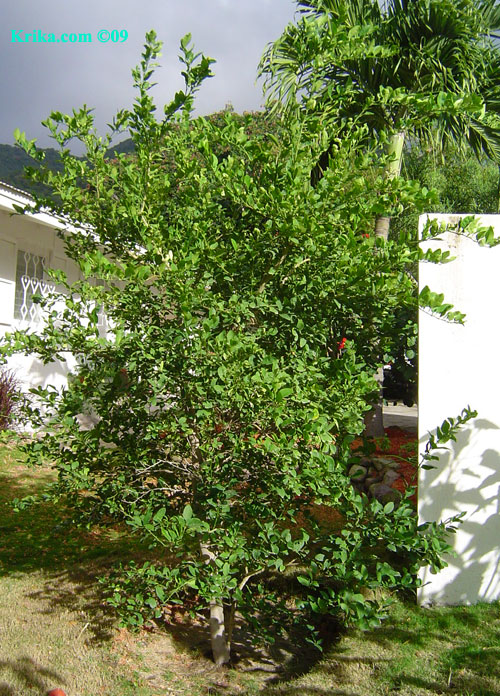 **Lime
Tree, Key Lime Citrus aurantifolia (L.) **Lime
Tree, Key Lime Citrus aurantifolia (L.)We developed a real fondness for the limes sold in Mexico which are smaller with a thinner rind than what we were used to in the States. In the patio of our apartment in Taxco, Mexico, there was a twenty to thirty foot lime tree growing and I saved some of the seeds from that tree to bring to what was to be our new home in Montserrat in the West Indies. The flavor of these limes is not bitter like bigger limes can be and they are more tart than the bigger limes. Lime oil is extracted from the rind of these fruits and Montserrat was once famous for the exportation of lime oil produced from its many lime tree plantations. You are probably familiar with the brand, “Roses Lime” whose juice originated in Montserrat. More than a century ago, Montserrat lime juice was carried on British ships to prevent scurvy engendering the nickname “Limey,” but the island's orchards were severely damaged by disease in the 19th century and lime trees were never replanted for commercial purposes. Even today, lime trees in Montserrat are very subject to what is locally called “die back disease” which starts at the top of the tree and works its way down, eventually killing the tree. From: Originating in India and Malaysia, this lime is now found in warm climate countries around the world. Photographed: Just by our wall garden at our former home in Montserrat. Planting and Care: This relatively small tree prefers to grow in full sun and grown from seed will take from eight to ten years to bloom and produce fruit. We ate the first fruits from this tree just before we sold the property. I wish we could have taken it with us. In Montserrat, we were told by locals to water the lime tree with diluted urine to reduce the negative affects of ants on these wonderful trees. We heeded their advice and our Mexican lime was about twelve feet tall and very healthy when we left. Text and Photograph ©GreenGardeningCookingCuring.com |
||
| “Limesicles” Recipe: Mix ½ cup of freshly squeezed lime juice, 1 cup of water, and 1 cup of sugar. Heat just until the sugar dissolves then cool and refrigerate. When cold, stir briskly and pour into small plastic cups with popsicle sticks. Freeze. |
||
|
**Liriope See The "B" Page -- BORDER GRASS |
||
| **Lily Turf See The "B" Page -- BORDER GRASS | ||
**Little
Christmas Flower, White Lace Euphorbia, Snow Bush, Snow Flake,
Snows of Kilimanjaro, White Christmas Bush Euphorbia
leucocephala To see how pretty these bushes can be as centerpieces Please See the H Page -- HERB GARDEN |
||
|
||
Lobelia,
Asthma Weed, Bladderpod, Emetic Herb, Edging Lobelia Lobelia
erinus With my appreciation this mystery plant was solved by Jac from North Norfolk, England |
||
|
||
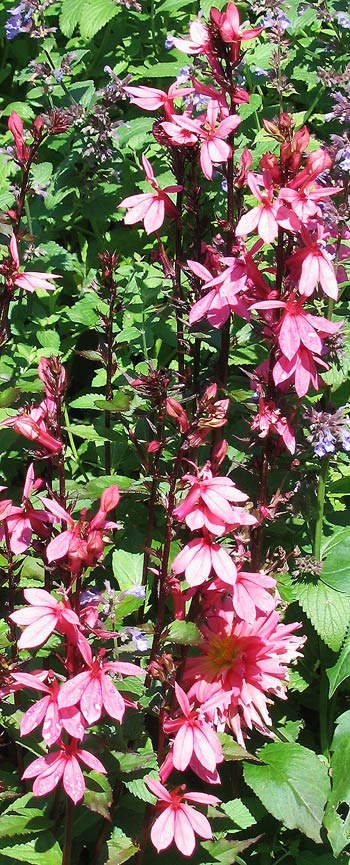 Lobelia Lobelia x Speciosa 'Fan Salmon' Lobelia Lobelia x Speciosa 'Fan Salmon' This lobelia is a hybrid, one of the more than 400 varieties in this large family. When mature it will be about 2.5 feet tall and covered with lovely pink flowers. You may also find it with lavender or red flowers. Benefits: This lobelia is tolerant of deer and of wet soil. From: North America Photographed: In the Thuya Garden, Mt. Desert Island, Maine, 2013. Planting and Care: Caring for this lobelia is pretty easy. Plant it in a sunny or semi-sunny area of the garden. Give it plenty of water to keep it happy. In fact, this lobelia can be used in continuously wet areas of the garden which are usually difficult for successful plantings. Text and Photograph ©GreenGardeningCookingCuring.com 2013/2018 |
||
| **Loblolly
Tree Very common in Montserrat, the loblolly almost always has termites. Text ©KO 2004 |
||
| **Locust
Tree, Stinky Toe Tree (in Montserrat) Hymenaea
courbaril L. or Inga megacarpa or Hymenaea
animifera The locust tree is a staple in Montserrat and it was in our garden, especially in the area that bordered the national park. It is a stately tree with deep green shiny hard leaves. Our little agoutis (take a look at the "W" Page -- Wildlife) can be heard cracking the very hard seed pods that fall as this is their favorite food, but watch out yourself as one of these pods falling from thirty feet in the air can do some real damage to your head. The extremely hard large oval pods of this tree are smelly as the local name implies, but despite the smell some folks in Montserrat eat the powdery material inside. This is also a popular treat in nearby Antigua. The West Indian locust is is a handsome tree growing eventually to be about sixty-five feet tall with its deep green shiny leaves providing welcome shade in a tropical climate. We had several at varying ages. Benefits: The seed pods are great favorites of the largest local wild animal, the agouti. We can often hear them outside in the early morning gnawing on the hard shells of the pods. This tree also provides a very decorative medium brown wood with shades of red for making distinctive furniture. Parts of the tree have also been used to treat headaches and gout among other things. From: Central and South America Photographed: In the banana garden at our former home in Montserrat. Planting and care: The locust appears to prefer very sunny locations with lots of moisture. In Montserrat, they usually bloom in June and July. By its very preference of location the locust puts itself at risk from termites who also seem to appreciate moisture. Little can be done about this except avoiding any damage to the bark or branches of your locusts. Do not trim branches unless absolutely necessary for the survival of the tree and be sure to treat cut surfaces with a protective covering. Check with your local agriculture department for their recommendations. Text and Photographs ©Krika.com 2009 and ©GreenGardeningCookingCuring.com 2018 |
||
|
||
| Lollipop Plant See the "S" Page -- SHRIMP PLANTS -- Golden Shrimp Plant | ||
Loofah,
Dishcloth Gourd, Vegetable Sponge Gourd Luffa
cylindrica |
||
LOVE LIES BLEEDING AND CHENILLE PLANTS |
||
I have to say I can't honestly distinguish between
these two plants and even Wikipedia seems to be showing the same
photographs for each of them. If you can help, I would greatly appreciate
it. |
||
Chenille
Plant Acalypha
hispida |
||
Love
Lies Bleeding, Pendant Amaranth, Tassel Flower,
Velvet Flower, Foxtail Amaranth, Pigweed Amaranthus
caudatus |
||
|
||
Photographed: At
the Roger Williams Park Botanical Center in Rhode Island in 2013. |
||
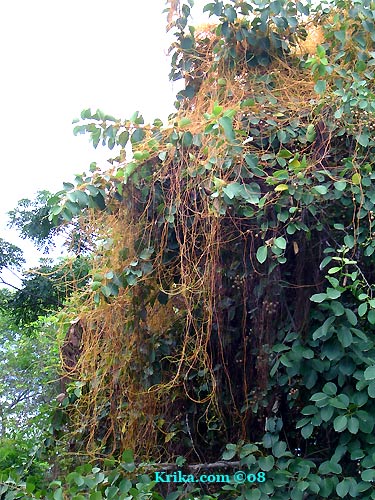 **Love
Vine, Devil's Twine Cassytha filiformis **Love
Vine, Devil's Twine Cassytha filiformisThis is a terrible parasitic spaghetti like vine that in no short time will encompass and destroy some of your favorite plants, bushes and trees if you live in a tropical or semi tropical climate. Its color is most commonly a deep mustard yellow, but it may also be seen with a more orange or reddish tinge. Benefits: Cancer patients may be thrilled to know that this plant produces several cancer fighting alkaloids in addition to producing its other health benefits. It is hard to imagine that this very tenacious parasite will ever become extinct so putting up with it will also have its benefits. Eradication: This takes determination and constant vigilance. As soon as you see a bit of the vine, stop and take the time to prune everything that has been twined by its tendrils being very careful not to drop any small piece on the way to the disposal bucket or wheelbarrow. Burn what you remove to ensure that any seeds that may be viable will not take hold anywhere else. From: Hades as the Devil's Twine name implies! Photographed: Just over the fence at a neighbor's home in Montserrat. Planting and Care: YOU HAVE GOT TO BE KIDDING! Link for more information: http://www.parasiticplants.siu.edu/Lauraceae/ Text and Photograph ©Krika.com 2008 and ©GreenGardeningCookingCuring.com 2018 |
||
| **Lucky Bamboo See The "D" Page DRACAENA -- Lucky Bamboo | ||
**Lucky Lily See The "D" Page DRACAENA -- Lucky Bamboo |
||
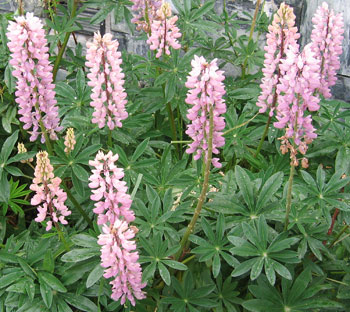 **Lupin,
Lupine, Wild Perennial Lupine, Sundial Lupine, Blue Lupine,
Indian Beet, Old Maid's Bonnets Lupinus
perennis **Lupin,
Lupine, Wild Perennial Lupine, Sundial Lupine, Blue Lupine,
Indian Beet, Old Maid's Bonnets Lupinus
perennisThese traditional perennial garden beauties come in all sorts of luscious colors which serve as a great tall backdrop for other plants in a deep garden bed. They have a peppery aroma which may or may not be appealing to you if they are used as cut flowers, but outdoors the scent is unlikely to trouble you. Benefits: Lupin seed pods were a dietary stable for Romans and as well for American Indians. Some varieties of lupin are not edible until specially treated to remove certain chemicals. Unfortunately lupins are also related to peanuts and each shares the serious allergic response of the other. From: Such disparate areas of the world as Egypt and the South American Andes. Photographed: In gardens in Ushuaia and Rio Gallegos, Argentina, 2012. Planting and Care: In cooler climates lupin grow well in full sun and they don't like the heat and moist air of warm climates. Plant them in an acidic soil that drains well. Give them some space, maybe about a foot or so apart and apart from the beautiful flowers, you'll appreciate the foliage as we. Lupin are nitrogen fixing so they are appreciated by other plants in the garden. Text and Photographs ©GreenGardeningCookingCuring.com 2012 and 2018 |
||
|
||
|
||
|
||
|
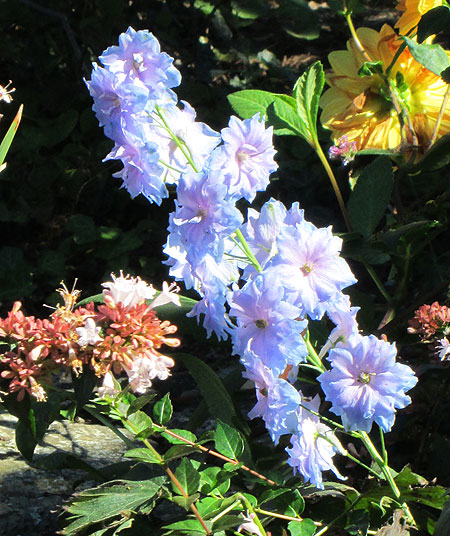 Larkspur
Delphinium
Larkspur
Delphinium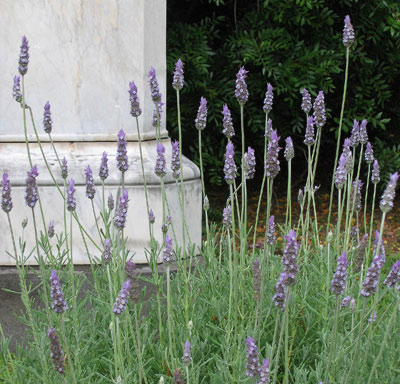
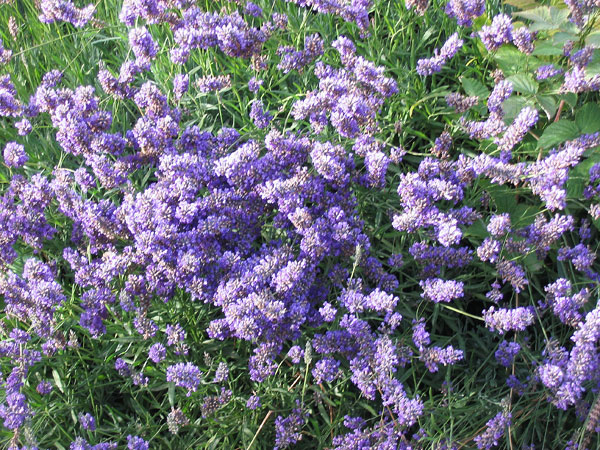
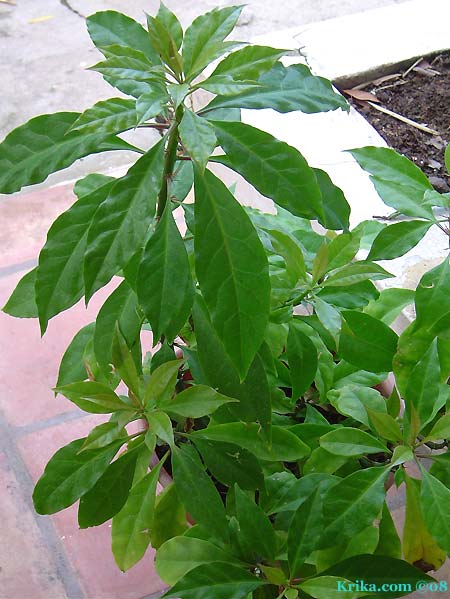
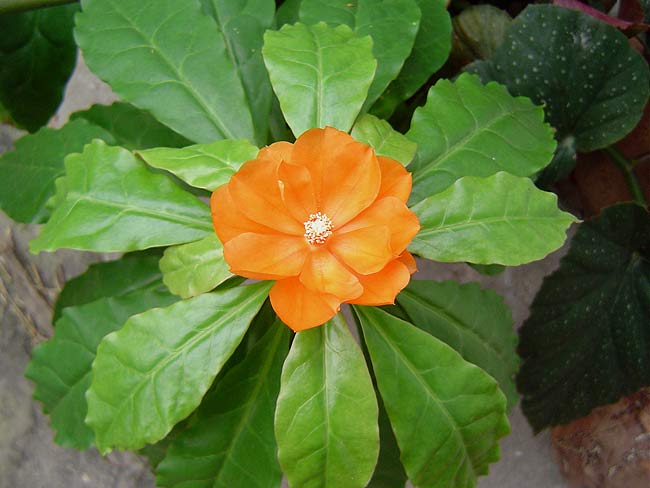
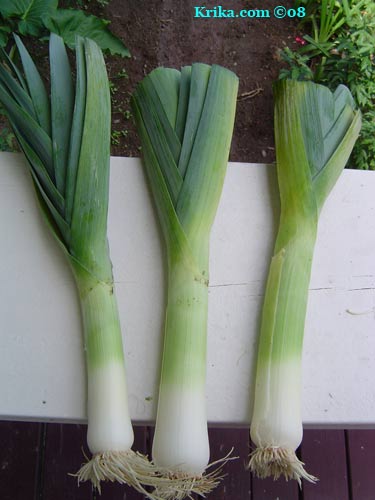
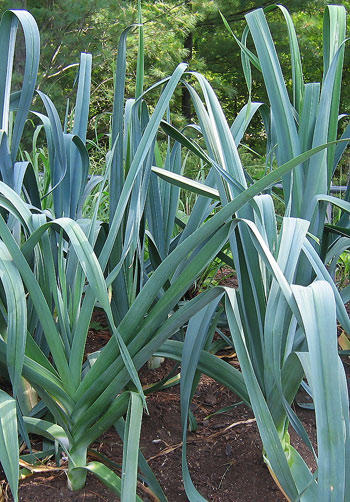
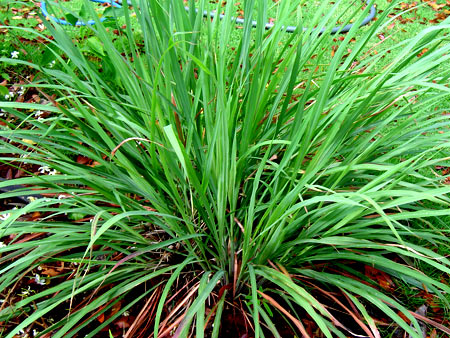
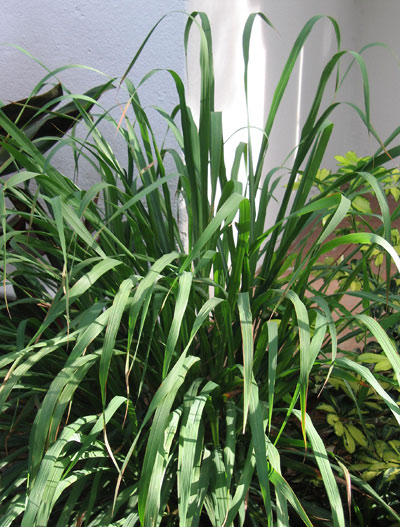
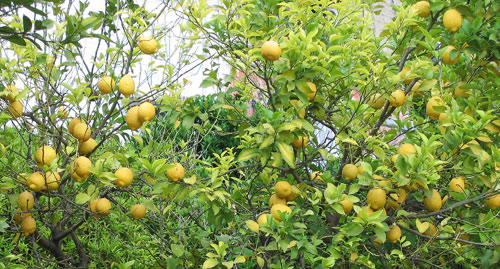
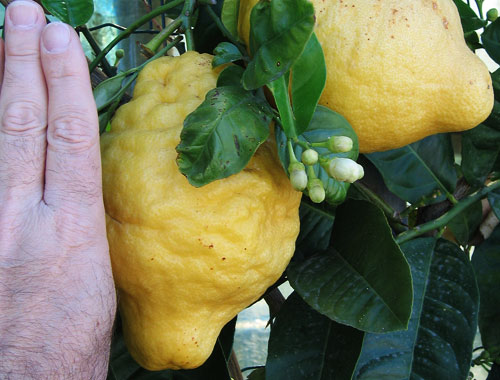
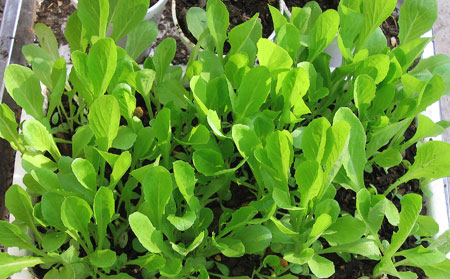
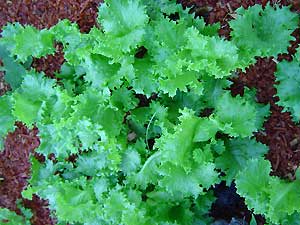 Photographed: On
the left at our former home at Lake Atitlan in Guatemala and
on the right in
our Mahogany garden at our former home in Montserrat.
Photographed: On
the left at our former home at Lake Atitlan in Guatemala and
on the right in
our Mahogany garden at our former home in Montserrat. 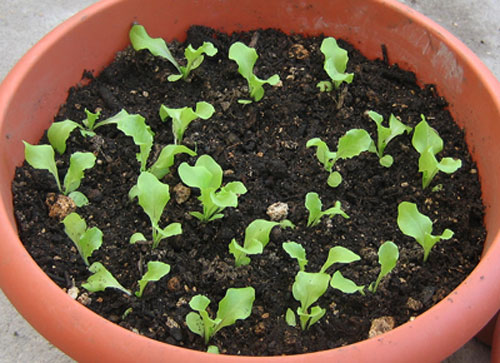
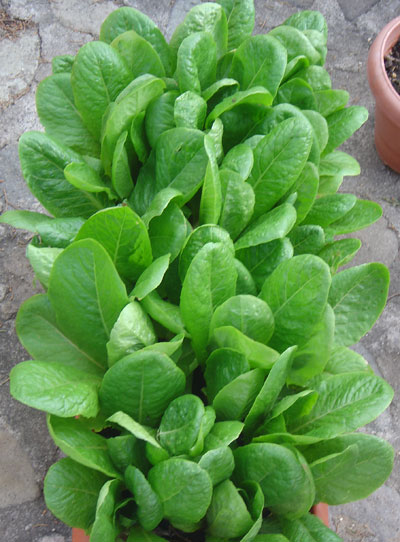 On
the left, lettuce seedlings and on
the right, romaine
lettuce in a window box.
On
the left, lettuce seedlings and on
the right, romaine
lettuce in a window box.